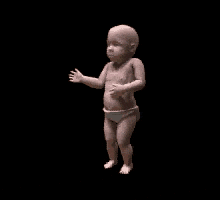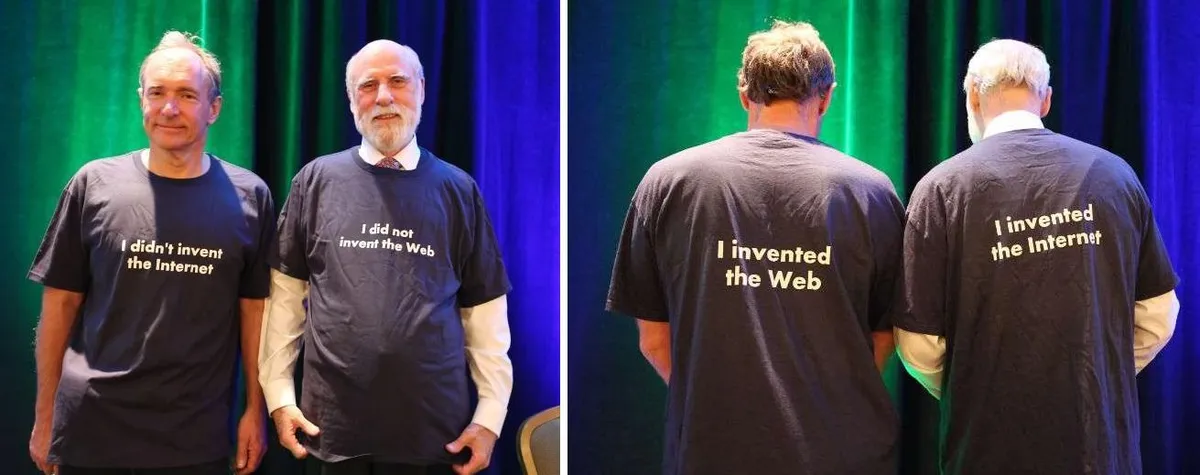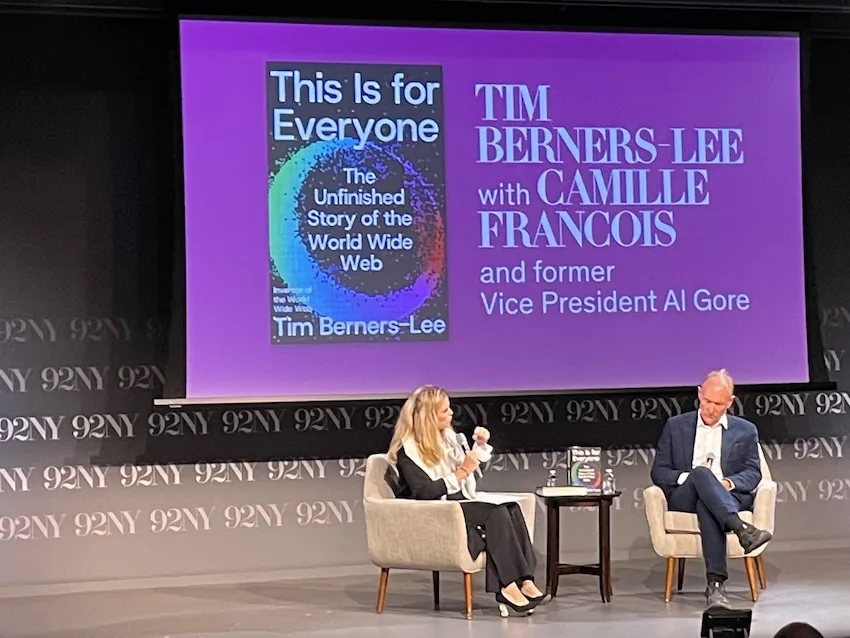
I first wrote HTML in middle school, typing out character by character to create tiny static websites as homework assignments, which were then printed on actual paper and graded by hand.
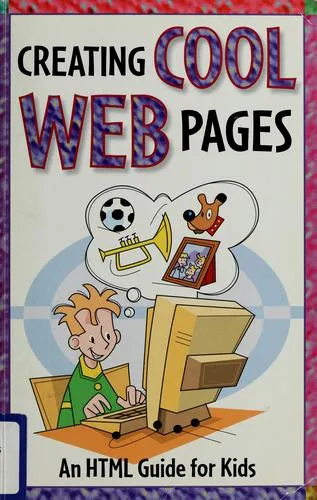
I made a photo guide to the Florida Everglades using a swamp green background with pink header text, as well as a website for my favorite science teacher; lightning bolts and spinning globes galore. In high school, I used my HTML skills to turn my Myspace profile into a hacker’s neon-green dream, with of course, Matrix gifs. This very website you're reading now also has bits of hand-crafted love, see that gently-wiggling heart in the bottom right corner? See what happens when you click it :)
It's for these reasons and many others that I immediately picked up tickets to see Sir Tim Berners-Lee, founder of the World Wide Web, speak in Manhattan about his new book - "This Is For Everyone".
Nerd Tangent: People often confuse the web & the internet, leading to a common misconception that he created the Internet. That was Vint Cerf. Tim created HTML, the concept of web browsers & servers, the HTTP protocol and URL schema. He's the reason we type http://www to access websites. The internet connected computers, the web connected people. Tim & Vint have adorable matching shirts to clear this up.
This post isn’t a book review, but if the web means something to you, there’s a good chance you’d enjoy reading it too. Below are some of the more memorable stories & lessons that I found very motivating.
Timing Matters
Tim's parents helped build the Ferranti Mark 1, the world’s first commercially available general-purpose electronic computer, and were in the first cohort of humans to understand and wield computing power. Their love of computing was passed on to Tim, and he built his first computer by hand, not assembling pre-built pieces like I did, but actually buying the transistors and soldering the circuits himself. His upbringing provided him the fundamentals to build atop of, from first principles.
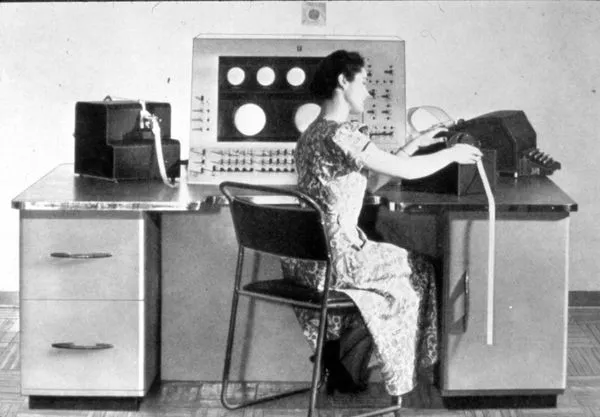
I too am lucky to have been born when I was, 1989 was a magical year. Tim submitted the official proposal for the web in March, development of the Python programming language started in December, and of course, Taylor Swift showed up on December 13th (I followed the next day). Being among the first kids ever to explore the web was magical. I learned how to build computers at a time when it was common to repair your own hardware, was taught how to build webpages and network cables in school, and threw LAN parties in my mom's basement. WiFi and iPads are cool and all, but some skills can only be gifted by time.
Side Quests Count
Tim was working at CERN (the European Organization for Nuclear Research) when he envisioned the web early in his career. He was tasked with studying particle physics, not computer science. But he saw how much of a problem it was for other researchers to share information, across physical networks and language barriers, then set out to do something about it.
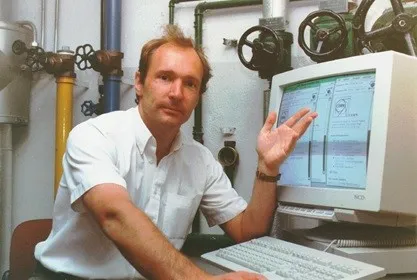
I find this so inspirational, that a good idea can come from anyone, anywhere. Of course he had great parents, teachers, mentors, and an entire community before this to nurture his gifts, but at no point did his vocation restrict his volition. See problem? Fix problem.
Support is Critical
It took years for his idea of the web to incubate at CERN; Tim was very generous to directly attribute all the people that helped him succeed by shielding him from bureaucracy and budget constraints. He recalled having to champion his ideas at every opportunity, every meeting, inspiring others to believe in it and then asking for help to defend it. It wasn't until the first "killer app" begun to spread, a simple phonebook, that others could actually understand what it all meant. Once he solved the issue of making a phone registry easier to access, his work could stand on its own. But before then, the web as we know it could have been shut down by a manager looking to "optimize" their team's priorities. Ideas need believers to survive.
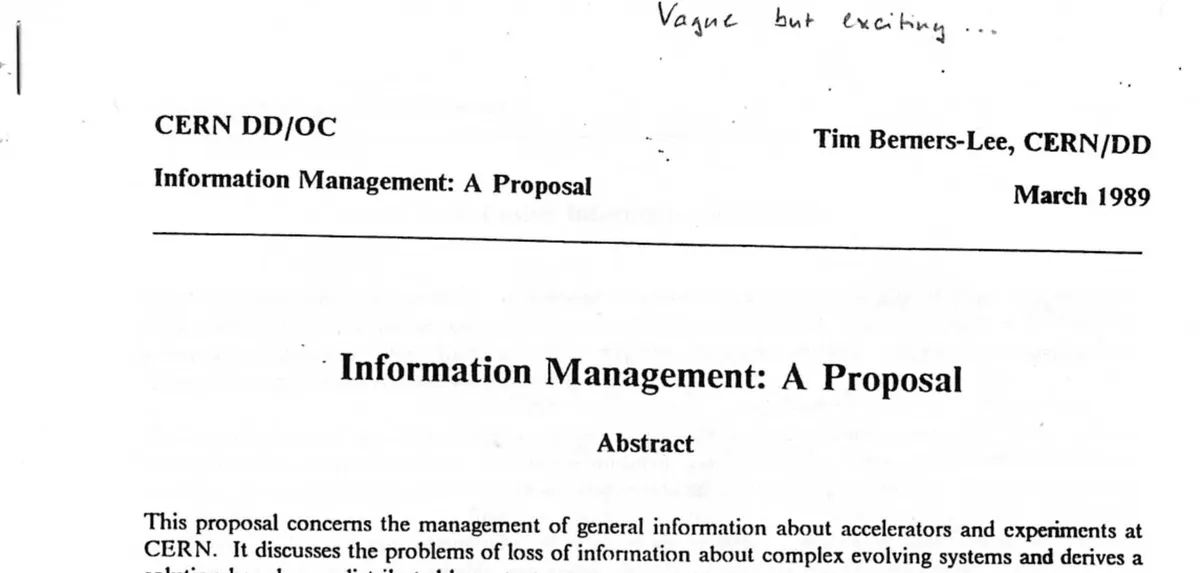
Looking Ahead
The early days of the web only made up the first third of the book. The rise of the smartphones, machine learning, and AI were also covered in detail. Having grown up on the web, developed mobile apps in college, hired to work with big data, and now learning how to build an LLM from scratch, this book told his story as much as it had mine. While I didn't get the opportunity to personally thank Tim for his gifts to the world, the next best thing would be to keep blogging with HTML and sharing hyperlinks with loved ones.
